Gentle reader,
Thanks for subscribing to our video newsletter, which mostly serves as a subscription channel for viewing the long form Los Angeles history webinars that kept us sane through the pandemic lock down.
One of those webinars, streamed live in March 2021, was dedicated to Paul R. Williams, the pioneering African-American L.A. architect. While his palatial Hollywood Regency residential work and commercial landmarks like the Beverly Hills Hotel are much beloved, Williams also designed a remarkable pocket sized mid-century modern tract house suburb, SeaView in Rancho Palos Verdes.
Built in 1960-61 by the Linde Construction Company on 10,000 square foot terraced lots, the nine house plans allowed for significant customization, including 80+ exterior variations, giving the original owners, many of them WW2 veterans taking advantage of no money down financing just as their GI benefits were expiring, the advantages of a custom built, architect designed home at middle class prices.
While Paul R. Williams has been widely celebrated in recent years, with his archive jointly accessioned by USC and The Getty and houses in metropolitan Los Angeles selling at a premium, SeaView has remained a well-kept secret on the Palos Verdes Peninsula.
It fell to the happy residents, including then teenage architecture aficionado Price T. Morgan and native son and preservationist Larry Paul, to research the history, salvage unique light fixtures and room dividers that tasteless new home owners were throwing out, and tell the neighborhood’s story to locals and a wider audience.
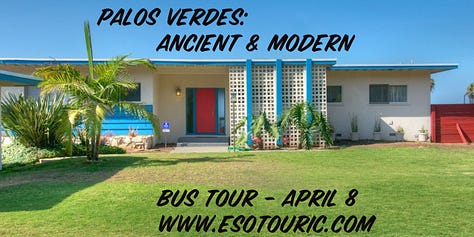





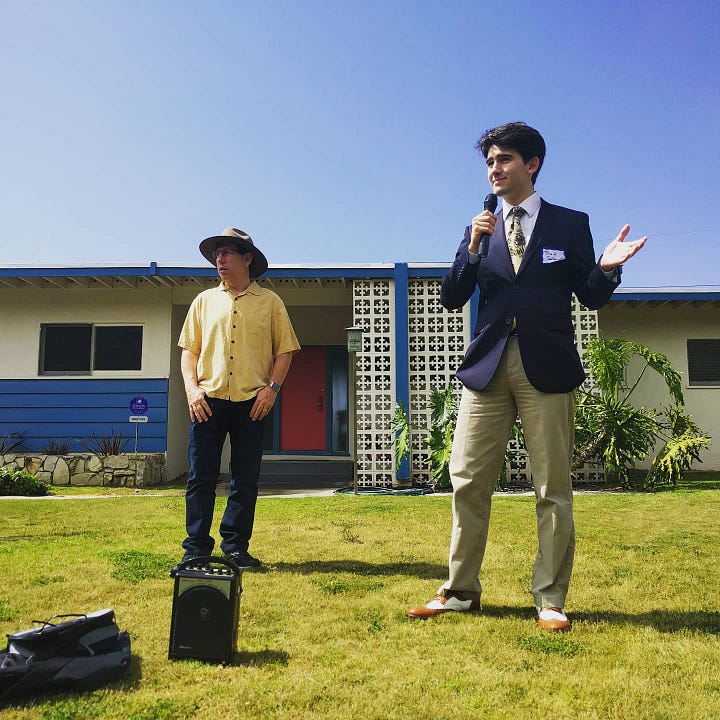

In 2017, as part of our tenth anniversary programming, we took a coach class bus full of eager explorers out to SeaView for a guided tour from Price and Larry, and featured the neighborhood on our podcast.
Celebrating SeaView was our honor, and it was a joy to hear about how living in and among well designed buildings had influenced both Price and Larry from an early age. Price’s family home on the east side of the neighborhood, restored and proudly marketed as a Paul R. Williams design, was sold last year after just two weeks on the market.
But the west side of the neighborhood is having a harder time. Last summer, two Paul R. Williams homes were red-tagged. In recent days, dozens of properties have gone dark, as power and gas are shut off, due to a severe, ongoing landslide that has streets buckling with movement as extreme as a foot a week.
The residents, many of them senior citizens, are struggling to deal with no power during a brutal heat wave and uncertainty about when, and if, things might return to normal.
The big question is how did this happen, and is it a natural or man-made crisis?
For a better understanding of why the earth is so angry, see Larry Paul’s thoughtful email to the City Manager, drawing on his vast knowledge of development on and around the slide area to pinpoint a possible cause uphill in Rolling Hills Estates, as well as potential infrastructure solutions.
Larry points to the lack of storm or sanitary sewers in the neighboring municipality that has seen significant new development and large remodels, even as the historic neighborhoods downhill remain largely static due to their setting among known landslides.
Why is there no plan for safely moving water from Rolling Hills Estates to the ocean? And can one be put in place before it’s too late?
It seems unconscionable that professional City Managers and City Engineers would permit a city to grow without weighing the impact on the people next door. And yet this is the kind of thing we see all over Los Angeles, where pro-development City Planners and Commissioners routinely sign off on enormous new projects without fully considering the impact on aging infrastructure, traffic, parking and surrounding properties.
The property taxes are enormous—and so is the pain.
Because SeaView’s architectural pedigree is still not well known, none of the extensive reporting about the landslide threat and service shut downs has mentioned the potential loss of the largest collection of original Paul R. Williams homes anywhere.
We want that to be part of the conversation about what sort of resources are available to stabilize the land, find safe solutions for providing lights and power and assist SeaView residents.
As with the National Register landmark Wayfarers Chapel (Frank Lloyd Wright, Jr., 1949-51) to the west, which just had to be dismantled due to earth movement tearing it apart, the effects of extreme weather like two years of unusually heavy rains are changing the way we inhabit the land. It’s time to find creative, proactive solutions that let us live in greater harmony within the systems around us.
Perhaps preservation grants can be tapped to help save this notable neighborhood, even though it has never been formally recognized as a landmark under the National Register or local designation (Rancho Palos Verdes received an “F” grade from the Los Angeles Conservancy for its lack of any preservation ordinance).
And that’s why we’re taking this webinar out from behind its paywall to bring SeaView into the light—even as the neighborhood is plunged into darkness.
Skip ahead to 1:16 in the three hour video at the top of this post to learn about the history of SeaView, the unique features that make its homes so appealing, and about Larry Paul’s extraordinary restoration of his geologically failing childhood home, which included extensive subterranean structural engineering to protect it from future land movement, and the use of cutting edge 3-D technology for project planning and documentation.
It’s an extraordinary story and we don’t think it could have happened in an ordinary neighborhood. SeaView is just special, and so are the people who call it home.
We hope that you enjoy this complimentary webinar, which also features photographer Janna Ireland and author Stephen Gee talking more generally about Paul R. Williams’ and their own work.
Long live SeaView!
Yours for Los Angeles,
Kim & Richard
Esotouric
Are you on social media? We’re on Instagram, Twitter, Facebook, YouTube, Mastodon, Threads, Bluesky, Substack Notes, TikTok and Reddit sharing preservation news as it happens.
Our work—leading tours and historic preservation and cultural landmark advocacy—is about building a bridge between Los Angeles' past and its future, and not allowing the corrupt, greedy, inept and misguided players who hold present power to destroy the city's soul and body. If you’d like to support our efforts to be the voice of places worth preserving, we have a tip jar and a subscriber edition of our main newsletter, vintage Los Angeles webinars available to stream, in-person tours and a souvenir shop you can browse in. We’ve also got recommended reading bookshelves on Amazon and the Bookshop indie bookstore site. And did you know we offer private versions of our walking tours for groups big or small? Or just share this link with other people who care.
UPCOMING BUS & WALKING TOURS
• Franklin Village Old Hollywood (9/15) • Highland Park Arroyo (Sat. 9/21) • The Real Black Dahlia (Sat. 9/29) • Know Your Downtown L.A.: Tunnels to Towers to the Dutch Chocolate Shop (10/5) • Broadway: Downtown Los Angeles’ Beautiful, Magical Mess (Sat. 10/12) • The Run: Gay Downtown L.A. History (Sun. 10/13) • Evergreen Cemetery, 1877 (Sun. 10/27) • Westlake Park Time Travel Trip (Sun. 11/3) • The 1910 Bombing of the Los Angeles Times Walking Tour with Detective Mike Digby (Sat. 11/9) • Hotel Horrors & Main Street Vice Downtown L.A. (Sat. 11/16) • Charles Bukowski’s Westlake (Sat. 11/23) • Angelino Heights & Carroll Avenue (Sat. 12/7) • Raymond Chandler’s Noir Downtown Los Angeles (Sat. 12/14) • Miracle Mile Marvels & Madness (Sun. 12/22) • Human Sacrifice: The Black Dahlia, Elisa Lam, Heidi Planck & Skid Row Slasher (Thurs. 12/26)







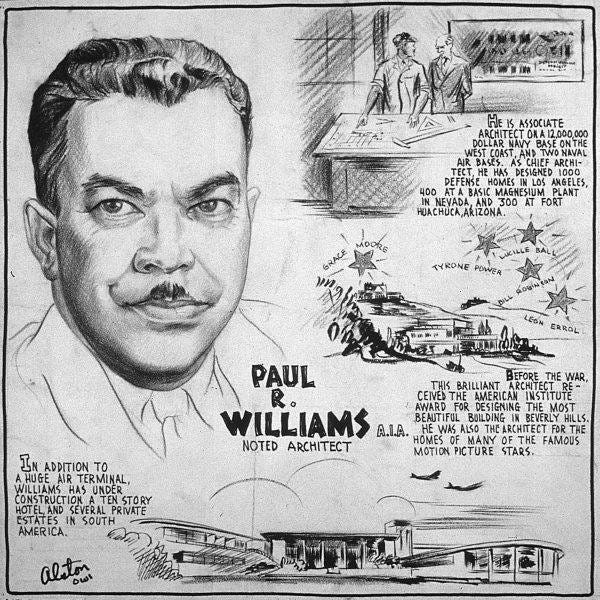










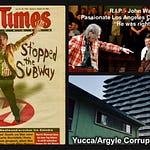

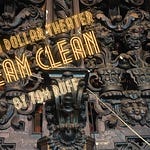
Share this post